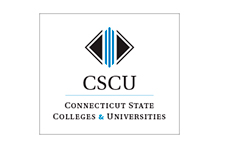CT Employment Lags New England States; Slight Job Growth is Anticipated
/Connecticut has recovered the number of private sector jobs lost during the previous recession. However, during the past six years, Connecticut’s job growth has been significantly slower than the nation’s and that of our neighbor states, according to the new issue of The Connecticut Economic Digest, produced by the state Department of Labor.
Between March 2012 and March 2018, Connecticut’s nonfarm employment is up 3.0 percent, with the private sector up 61,900 jobs (4.4%) and government employment down 12,100 jobs or 5.0%. In total, Connecticut’s employment increase over the six-year period is the lowest among the six New England states, at 3 percent. The others: Massachusetts, 10.1%; New York, 9.3%, New Hampshire, 8.0%; Rhode Island, 7.0%; Maine 4.8%; and Vermont, 3.2%.
Health Care and Social Assistance makes up the largest combined industry sector in the state, as in all of the New England states, comprising over 18 percent of Connecticut employment. In the past five years (year ending 2nd Quarter 2012 to 2nd Quarter 2017) Health Care has grown by approximately 5,000 jobs while Social Assistance has added nearly 10,000, according to the data.
Accommodation and Food Services is the third largest growing sector, adding more than 11,000 jobs from 2012 to 2017. This is consistent with changing consumer preferences and is also occurring at the national level, report authors Matthew Krzyzek, Economist, and Patrick Flaherty, Assistant Director of Research, at the Department of Labor, point out.
The occupational category of Transportation and Warehousing has seen strong growth in recent years. From 2012 to 2017, the sector has added nearly 5,000 jobs including 2,300 since 2015, largely due to online retailers such as Amazon adding warehouses and distribution centers in the state. The consumer preference shift to online shopping is seen as responsible for the increase in Transportation and Warehousing employment, but has also negatively impacted Retail Trade, which lost jobs throughout 2017.
 Manufacturing, the sector with the most losses since 2012, is down 8,600 jobs in the five-year period. Educational Services employment (public and private) which has long been a sector with employment growth, declined during the 2015 to 2017 period, influenced by decreases in school-aged population and state and local budget issues.
Manufacturing, the sector with the most losses since 2012, is down 8,600 jobs in the five-year period. Educational Services employment (public and private) which has long been a sector with employment growth, declined during the 2015 to 2017 period, influenced by decreases in school-aged population and state and local budget issues.
Current projections for Connecticut, for the two-year period from the second quarter of 2017 to the second quarter of 2019, suggest overall employment in Connecticut will increase by 1.1 percent. Connecticut’s projected 2017- 2019 job growth is slower than projected by most other states, although it is faster than the growth projected by seven states, including Delaware, Kansas and Maine, the Department of Labor review and analysis indicate.
Projections for the New England states range from anticipated growth of 2.9 percent in Massachusetts to .2 percent in Maine. Connecticut’s expected job growth is second lowest among the six states.
Major Industries that are projected to have the largest percent employment increases are the Other Services, Leisure and Hospitality, and Construction sectors, which are projected to grow 3.0 percent, 2.4 percent, and 2.1 percent, respectively.
The occupational groups expected to increase the most are Personal Care and Service Occupations, up 3,664 jobs, Food Preparation and Serving Related, up 3,592 jobs, Transportation and Materials Moving Occupations, up 2,367 jobs, and Healthcare Practitioners and Technical, up 2,308 jobs, according to the analysis. The three major occupational groups projected to decline over the two-year period are Office and Administrative Support, down 1,736 jobs, Sales and Related, down 979, and Production Occupations, down 160 jobs.
“Connecticut’s short-term projections show that Connecticut’s slow employment growth over the recent few years is likely to continue, and sectors will continue to shift. Manufacturing is picking up while Education expected to slow. Connecticut is also part of a national trend which sees increases in warehousing and transportation while retail is under pressure,” the analysis points out. “Our best judgment is that the rapid growth seen in early 2018 will moderate but that growth will continue through the end of the projections period.”



 nanostructures, or Netflix. They did, however, have a vision that the academy would be dedicated to new knowledge—and these new members help us achieve that goal.”
nanostructures, or Netflix. They did, however, have a vision that the academy would be dedicated to new knowledge—and these new members help us achieve that goal.” Also being inducted in this year's class are John J. Collins of the Yale Divinity School and Gerald I. Shulman and Haifan Lin of the Yale School of Medicine.
Also being inducted in this year's class are John J. Collins of the Yale Divinity School and Gerald I. Shulman and Haifan Lin of the Yale School of Medicine.

 “At Pratt & Whitney, we are in a very competitive industry and our continued success depends on our people driving innovation into every part, process and service,” said Carter. “Our customers have depended on Pratt & Whitney innovators literally for generations, and with the GTF, they can continue to count on us for the next generation.”
“At Pratt & Whitney, we are in a very competitive industry and our continued success depends on our people driving innovation into every part, process and service,” said Carter. “Our customers have depended on Pratt & Whitney innovators literally for generations, and with the GTF, they can continue to count on us for the next generation.”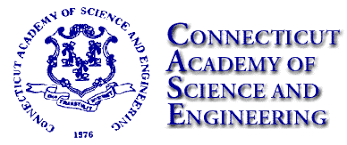 nation at the forefront of global technology and economic leadership.
nation at the forefront of global technology and economic leadership.
 The five dimensions, mentioned above, were weighted to determine an overall score on a 100 point scale using thirty relevant metrics including the cost of living, rate of home ownership and insurance, average student loan debt, voter turnout rate, unemployment rate, percentage diagnosed with depression and the average price of a latte at Starbucks.
The five dimensions, mentioned above, were weighted to determine an overall score on a 100 point scale using thirty relevant metrics including the cost of living, rate of home ownership and insurance, average student loan debt, voter turnout rate, unemployment rate, percentage diagnosed with depression and the average price of a latte at Starbucks. In comparing the average annual opioid-related death rates per 100,000 population in 2012-13, 2014-15, and 2016-17, the dramatic increases across communities statewide is quite evident. The data analysts point out that data are where deaths from 'any opioid' (meaning some type of opioid were found in the person) take place. Therefore, they explain, one would expect to see higher rates in places with large hospitals (hence high rates in cities). They add that one can also not discount that these places are also seeing higher rates among its residents.
In comparing the average annual opioid-related death rates per 100,000 population in 2012-13, 2014-15, and 2016-17, the dramatic increases across communities statewide is quite evident. The data analysts point out that data are where deaths from 'any opioid' (meaning some type of opioid were found in the person) take place. Therefore, they explain, one would expect to see higher rates in places with large hospitals (hence high rates in cities). They add that one can also not discount that these places are also seeing higher rates among its residents.
 The Connecticut Data Collaborative has posted on its
The Connecticut Data Collaborative has posted on its 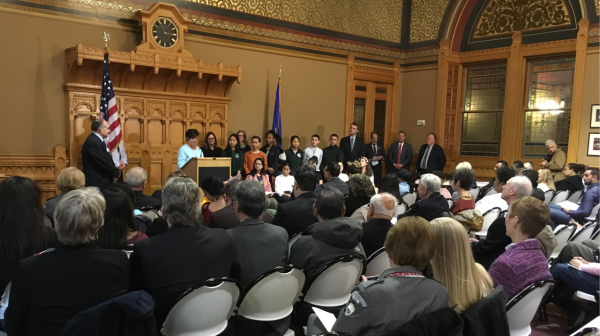
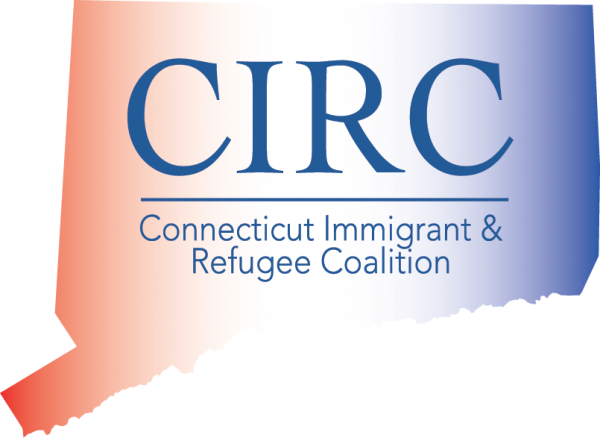 Sixth-graders from the Interdistrict School for Arts and Communication in New London were recognized for their project, “Community Faces-Humanizing the Immigrant Label,” parts of which were on display at the Capitol. The second group was Teens4Citizenship, a Hartford Public Library and Hartford Public Schools collaborative program. As "Citizenship Guides," these high school immigrant students support family and community members on the path to Citizenship and upon turning 18 pursue their own citizenship.
Sixth-graders from the Interdistrict School for Arts and Communication in New London were recognized for their project, “Community Faces-Humanizing the Immigrant Label,” parts of which were on display at the Capitol. The second group was Teens4Citizenship, a Hartford Public Library and Hartford Public Schools collaborative program. As "Citizenship Guides," these high school immigrant students support family and community members on the path to Citizenship and upon turning 18 pursue their own citizenship. Instead of honoring Christopher Columbus, the Indigenous Peoples’ Day recognizes Native Americans, who were the first inhabitants of the land that later became the United States of America. Advocates for the switch to Indigenous Peoples Day argue that Columbus did not “discover” America in 1492 but instead began the colonization of it.
Instead of honoring Christopher Columbus, the Indigenous Peoples’ Day recognizes Native Americans, who were the first inhabitants of the land that later became the United States of America. Advocates for the switch to Indigenous Peoples Day argue that Columbus did not “discover” America in 1492 but instead began the colonization of it.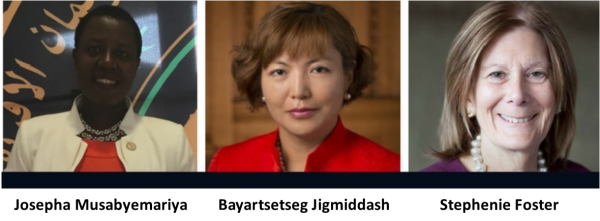 On campus will be:
On campus will be:



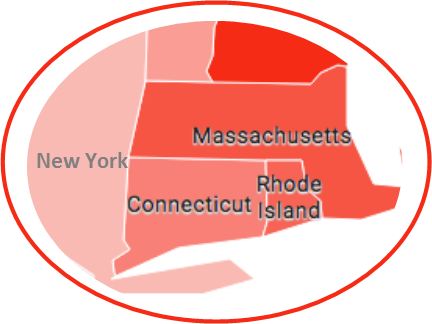 Even in advance of the merger plan, the Board of Regents has been extending lower tuition offers in every direction, reaching out to students in Massachusetts, Rhode Island, New York and even New Jersey, making offers that the Regents hope will be tough to refuse.
Even in advance of the merger plan, the Board of Regents has been extending lower tuition offers in every direction, reaching out to students in Massachusetts, Rhode Island, New York and even New Jersey, making offers that the Regents hope will be tough to refuse.